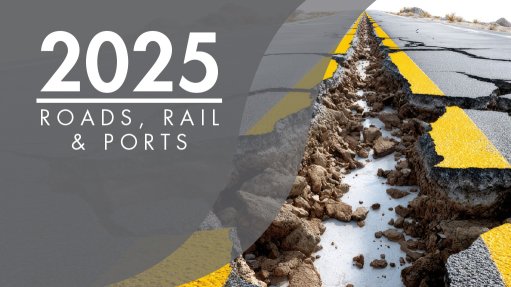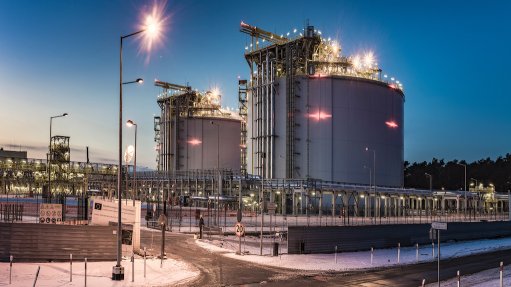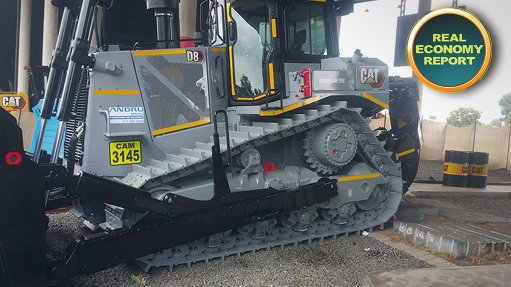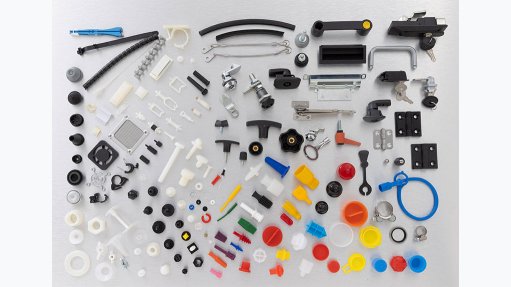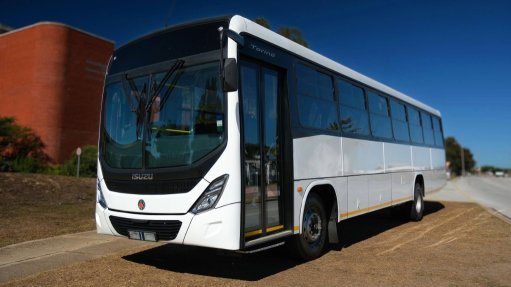The Rise of Hybrid Cooling in African AI and HPC
This article has been supplied.
By Jonathan Duncan, technical director for Africa at Vertiv
The future of IT thermal management is here… and it’s a hybrid of air and liquid cooling technologies.
Enterprises across the globe are adopting high-performance computing (HPC) for artificial intelligence (AI) and machine learning (ML) model training and inference, causing a swift rise in chip, server, and rack power consumption, thus increasing heat dissipation levels.
Traditional air cooling alone within a data centre is not able to accommodate hot-running HPC equipment effectively, meaning that many data centre teams are strategising how best to design their cooling strategies future-ready in support of evolving business requirements.
Data centres must continue to be run efficiently, in a manner that addresses potential infrastructure risks. One such solution is the combined use of both air and liquid cooling options.
Anticipated growth of liquid cooling technology
According to a “MarketsandMarkets” ‘Data Center Liquid Cooling Market’ report, the global data centre liquid cooling market is projected to increase from USD 2.6 billion in 2023 to USD 7.8 billion by 2028; that’s a compound annual growth rate (CAGR) of 24.4 percent during the forecast period[1].
This development is primarily being driven by the requirements for increased cooling efficiency, energy savings, scalability, sustainability and higher performance.
In Africa, where climate and infrastructure issues loom large, there are additional pressing reasons to look at the efficiencies of liquid cooling technologies in data centres.
Fighting water issues with… water?
One of the main challenges when considering cooling solutions for data centres is the fact that servers need to be kept within certain temperature and humidity limits to function optimally.
As a case in point, Africa is the second-driest continent – behind only Australia – with two thirds of it classed as arid or semi-arid. The 2023 / 2024 El Niño weather phenomenon has had a devastating effect on large parts of the region, creating extreme weather effects, including drought and heatwaves, which scientists say are becoming increasingly frequent and severe because of climate change.
At the same time, infrastructure issues around water availability and usage is another concern that must be constantly addressed within the data centre arena across the continent.
Using liquid cooling solutions within the data centre system offers one way to avert issues – if they are using ‘closed loop’ liquid cooling technology, which means that once the system pipes have been filled with water, there is no water waste. Moreover, a closed water loop is capable of capturing heat to utilise it to warm nearby offices, homes or farms, supporting the circular economy.
Getting ready to deploy liquid cooling in the data centre
For African organisations preparing themselves to deploy liquid cooling, they must be aware of the fact that this is a significant initiative that requires careful planning and consideration of – among other factors - the existing facility’s footprint, current thermal management strategy, workloads, and budget.
A roadmap to kicking off this type of cooling strategy should include the following steps:
Determining current and future workflow requirements: IT and facility teams must decide how much space to allocate to new AI / HPC workloads to support current demand and growth over the next few years. Some will convert a few racks at a time, while others could allocate entire rooms for these workloads and supporting the addition of liquid cooling systems.
Conducting a site audit: Before developing a business case, teams need to know if retrofitting a facility with liquid cooling systems is technically and economically feasible. The IT and facility team should work with partners to conduct a thorough site audit, including the following steps:
Performing a computational fluid dynamics (CFD) study of existing airflows in the facility.
Analysing existing air-cooling equipment to see if it provides enough capacity to be leveraged in the new hybrid cooling infrastructure and if current piping can be reused.
Performing a flow network modelling (FNM) analysis to evaluate the ability of the liquid cooling system to support server liquid cooling requirements.
Executing water and power usage effectiveness (WUE and PUE) analyses to determine how efficiently they are using water and power resources.
Carrying out a total cost of ownership (TCO) study to optimise operations by replacing old or inefficient equipment to lower operational costs.
Examining infrastructure to see if it can be adapted for use with more power-intensive workloads, such as AI.
Reviewing physical space to see if raised floors can support the combined weight of new power and hybrid cooling systems, and determine access routes for piping.
Checking the facility for potential required maintenance of existing infrastructure.
Reviewing the on-site water supply, to determine if it is suitable for use in planned liquid cooling systems.
Addressing any safety regulation compliance concerns.
Modelling new infrastructure in the desired space: With this data and partner support, IT and facility teams can model the desired hybrid cooling infrastructure in the data centre and identify obstacles to overcome, such as weight restrictions, a lack of on-site water, the need to install new piping, access route concerns, and other issues. Once all issues have been addressed, it is a good idea to contract with a vendor to construct a digital twin replica of the new design to explore new systems and processes in 3D.
Considering budget and site impacts: The audit and modelling exercise provides the IT and facility team with insight into how extensive the liquid cooling deployment will be to develop a business case for executive consideration. The IT and facility team will also want to consider how on-site construction will disrupt current operations and what impact adding extra heat loads on site will have on current workloads and service-level agreements (SLAs).
Factoring in efficiency and sustainability gains: Since liquid cooling removes heat at the source, it can be more efficient than air cooling alone and lowers facilities’ PUE metrics. By using water or fluid to cool systems and allows teams to recapture and reuse heat, reducing wasted energy and supporting the circular economy. These gains can reduce indirect or energy-regulated emissions for enterprises. As a result, liquid cooling can be an essential part of enterprises’ sustainability programmes.
Designing the new solution: With this information, a new solution customised for site requirements can be designed, whereafter a design with a bill of materials and required services, issue quote requests and select the manufacturers to build and integrate the liquid cooling system.
The first step towards liquid cooling
Do you want help navigating options, designing a custom system for your site, and creating a deployment plan? Contact Jonathan Duncan.
Article Enquiry
Email Article
Save Article
Feedback
To advertise email advertising@creamermedia.co.za or click here
Comments
Press Office
Announcements
What's On
Subscribe to improve your user experience...
Option 1 (equivalent of R125 a month):
Receive a weekly copy of Creamer Media's Engineering News & Mining Weekly magazine
(print copy for those in South Africa and e-magazine for those outside of South Africa)
Receive daily email newsletters
Access to full search results
Access archive of magazine back copies
Access to Projects in Progress
Access to ONE Research Report of your choice in PDF format
Option 2 (equivalent of R375 a month):
All benefits from Option 1
PLUS
Access to Creamer Media's Research Channel Africa for ALL Research Reports, in PDF format, on various industrial and mining sectors
including Electricity; Water; Energy Transition; Hydrogen; Roads, Rail and Ports; Coal; Gold; Platinum; Battery Metals; etc.
Already a subscriber?
Forgotten your password?
Receive weekly copy of Creamer Media's Engineering News & Mining Weekly magazine (print copy for those in South Africa and e-magazine for those outside of South Africa)
➕
Recieve daily email newsletters
➕
Access to full search results
➕
Access archive of magazine back copies
➕
Access to Projects in Progress
➕
Access to ONE Research Report of your choice in PDF format
RESEARCH CHANNEL AFRICA
R4500 (equivalent of R375 a month)
SUBSCRIBEAll benefits from Option 1
➕
Access to Creamer Media's Research Channel Africa for ALL Research Reports on various industrial and mining sectors, in PDF format, including on:
Electricity
➕
Water
➕
Energy Transition
➕
Hydrogen
➕
Roads, Rail and Ports
➕
Coal
➕
Gold
➕
Platinum
➕
Battery Metals
➕
etc.
Receive all benefits from Option 1 or Option 2 delivered to numerous people at your company
➕
Multiple User names and Passwords for simultaneous log-ins
➕
Intranet integration access to all in your organisation








